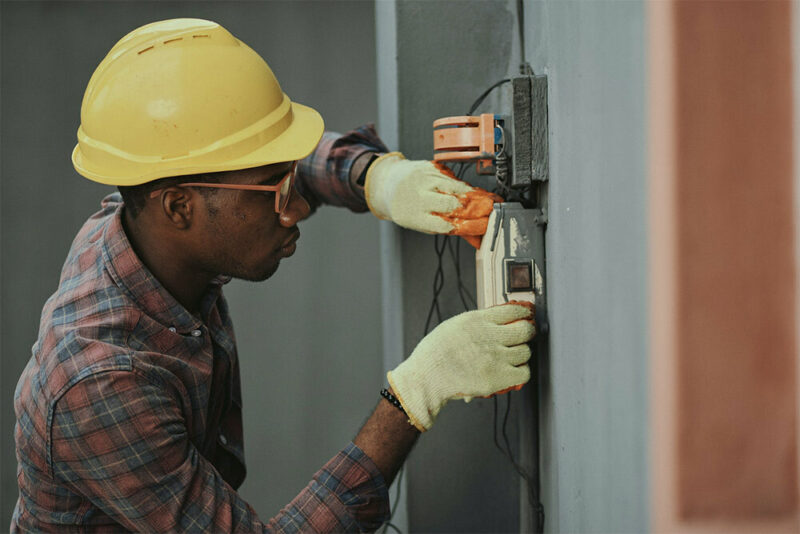Article Excerpt
Learn how to measure your home's electric capacity, what kind of breaker box and power outlets you need, and how much an EV may lower your power bill.
Newer models of electric vehicles (EVs) are able to travel further and further on a single charge, and charging stations are becoming more common on roads and highways. But the main place EV owners charge their vehicles is at home. If you want to invest in an EV, you need to make sure your home has the capacity to keep it charged. This might require upgrading your electrical system.
How do I figure out my home’s electrical capacity?
Several measurements are necessary in order to determine whether your home can handle recharging an EV. You may have seen these terms before in relation to power outlets or batteries:
Ampere, or “amp”: Amperage measures the amount of electricity that runs through a circuit. If you think of it in terms of plumbing, it measures the flow rate of water through a pipe.
Volt: Voltage measures the speed at which electricity moves through a circuit. It is similar to water pressure in a pipe.
To determine whether your home is already equipped to charge an EV, you need to know:
The amperage of your breaker box; and
The voltage of the power outlet you will use to charge the vehicle.
![Photo by J. Peter Eisenschenk on Flickr [Creative Commons] electrical breaker box](/images/articles/_generalPhotoStandard/electrical-breaker-box.jpg)
Photo by J. Peter Eisenschenk on Flickr [Creative Commons]
What does an electric vehicle need to recharge?
You can inspect your breaker box and outlets to determine their amperage and voltage, respectively. A licensed electrician can advise you about your home’s electrical capacity.
Breaker Box Amperage
Generally speaking, you need a breaker box that can handle at least 200 amps in order to charge an EV. If you have central A/C in your home, you probably already have a 200A breaker box. Older homes might have 65A, 100A, or 125A breaker boxes. Newer homes may have 200A or 225A breaker boxes.
If you will be installing a new outlet for the EV charger, you also need an empty breaker slot in your breaker box. Most boxes have available slots, but if yours doesn’t, you might need to replace yours with a bigger one.
Power Outlet Voltage
The majority of the outlets in your home use 120 volts (120V). If you have a central A/C unit, a dryer, or an electric stove, you also have one or more 240V outlets in your home. These outlets have higher “pressure,” so they can produce more power in a shorter period of time.
Most EVs can charge from a standard 120V outlet. This can produce enough charge overnight for about 60 miles of travel. In EV lingo, this is known as Level 1 charging. If you are driving a plug-in hybrid electric vehicle (PHEV), which uses both a battery and gasoline to run, this is likely to be enough charge. An EV might need more.
A 240V outlet, or Level 2 charging, can charge a vehicle much faster. This probably requires installing a new outlet in your garage. Most homes only have 240V sockets in locations where one would put a dryer or oven.

How do I upgrade my home for an electric vehicle?
It is highly recommended that you have an electrician perform the work to upgrade your home for EV charging. The process may involve upgrading or expanding the breaker box, installing new wiring, and adding a new 240V socket in your garage. You might need a city permit to make some or all of these upgrades. An electrician with experience in your area can advise you about both your electrical and permit needs.
How will charging an electric vehicle affect my power bill?
Charging an EV or PHEV at home will increase your electricity usage. This means, of course, that your power bill will go up.
The exact amount of electricity that it takes to charge an EV or PHEV depends in large part on the vehicle’s battery capacity and its efficiency in terms of kilowatt-hours (kWh) per mile. The effect on your energy bill would depend on how much you drive.
According to data from the U.S. Department of Energy (DOE), the average residential rate for electricity in Texas is $0.1426 per kWh as of March 2023.
Estimates of the average rate of energy consumption among EVs range from 0.2 to 0.35 kWh per mile. Let’s use the average of that and say 0.275 kWh per mile.
Americans drive an average of 14,000 miles per year.
Based on these numbers, the cost of charging an EV would be $549.01 per year or $45.75 per month.
That’s probably less than most people spend on gas in a month. At the same time, EVs and PHEVs tend to be more expensive than gas-powered cars.
How can I ensure that I am safely recharging my electric vehicle?
The best way to ensure that you can safely charge an EV or PHEV in your home is to have an electrician inspect everything. EV chargers have built-in safety mechanisms that can prevent circuits from overheating. If you are using an existing 120V outlet for Level 1 charging, have an electrician make certain that everything is up to code and in good working order.

Photo by Emmanuel Ikwuegbu on Pexels
Ready to own a place to house your new car?
If you’re taking energy savings seriously, you’ll likely want to make some major modifications to your home. Plus, for safety reasons, you may need different electric equipment to charge an EV. All the more reason to become a homeowner!
The mortgage professionals at The Wood Group of Fairway are on standby to answer your questions and help you start the pre-approval process. Begin today by answering a few easy questions online!




